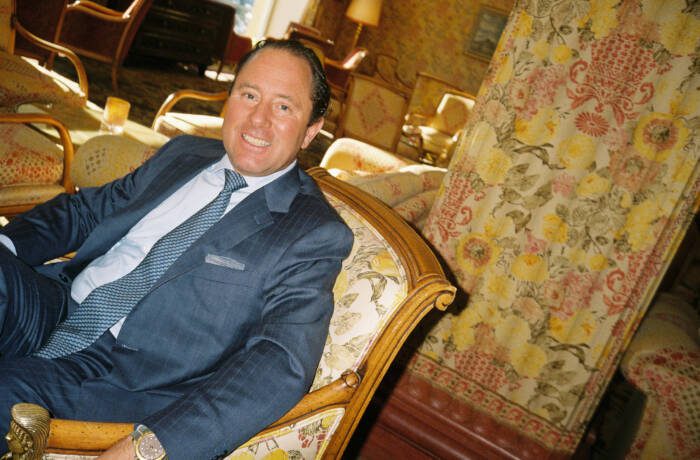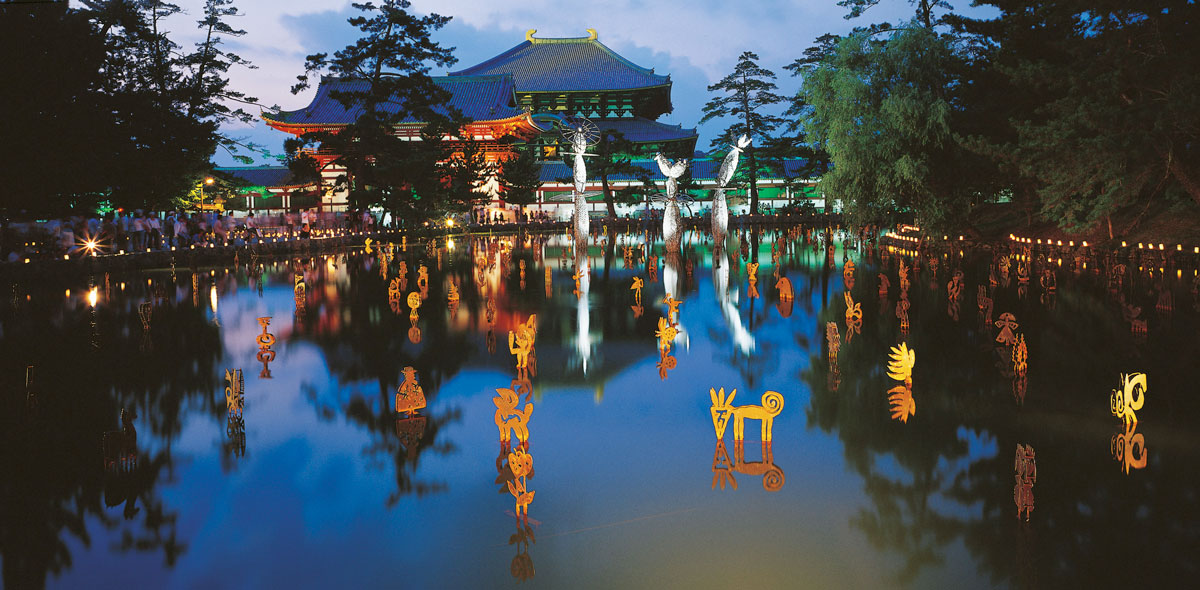
The Three Magic Flowers Of Jitchu, Kagami Lake, Todai Ji Temple in Nara, Japan by Nadim Karam
Born in Senegal, and raised in Lebanon, Nadim Karam is an architect, painter, sculptor, writer and designer. With his Beirut-based multidisciplinary design studio, Atelier Hapsitus, Karam has created large-scale urban art projects in Paris, Prague, Dubai, London, Melbourne, Tokyo and Chicago. His work has been exhibited at several Venice Architecture Biennales, and his first major exhibition in the UK is currently on display at The Fine Art Society. Millie Walton speaks to the creative polymath about urban toys, artistic challenges and the importance of fun.
LUX: Your sculptures and paintings are often quite fantastical. Where does your inspiration come from?
Nadim Karam: Life! I believe, like Gabriel Garcia Marquez, that an element of fantasy in a serious context or with a serious message can transport an idea or story, and help it catch alight. A judicious dose of fantasy is one of our antidotes to apathy, ugliness, and pessimism.
Inspiration, I suppose, comes from our experience of life and the way we look at the world… I am lucky to come from Lebanon, with its wonderful, chaotic energy and endless contradictions, and I spent ten years absorbing Japanese cultural philosophy, which is now very much a part of me. I have so many ideas; I just need to find the quiet in-between-work moments to put them down in my sketchbook.
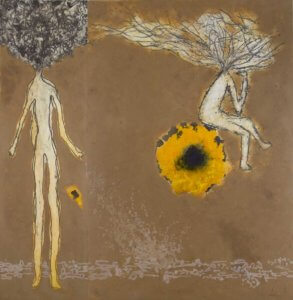
Genesis Diptych 2016 by Nadim Karam
LUX: At Atelier Hapsitus, you combine several different creative disciplines – art, architecture and design – is there an over-arching theme or vision that ties these altogether?
NK: Probably that would be absurdity, memories and stories, which constantly feed into each other. Their meeting point is the public art projects that I create for cities or public contexts.
LUX: You often describe your sculptures as ‘Urban Toys’ – what do you mean by that?
NK: My work is whimsical; I make toys to the scale of the city to create question marks, open a dialogue and introduce moments of delight, or fantasy to urban contexts.
Read next: Why you should invest in a modern classic car
LUX: How do you persuade clients that spending money to make their urban environments ‘playful’ is important?
NK: I believe in it. I believe in it so much that I invest years and years working with communities, municipalities and bureaucrats to persuade them to introduce playfulness to their cities. Urban environments can be lonely places, dominated by real estate, communication and transportation systems and the business of making money. Adults need dreams, fantasy and moments of wonder just as much as they did when they were children, but at a certain point they were required to put their toys away and get on with the serious business of living. If we can introduce organic flexibility within rigid systems through interactive works, we can help reinforce a sense of belonging to a community, and celebrate enjoyment for its own sake.
This will never work if you just cut and paste an artwork into a context – that is not the kind of public art I am talking about. Before proposing a project to a city, I study, with my office, the history and culture, the geography and built context, because I want to create works that feel like they have grown out of the place or in contrast with it, and are adopted by the people who live there.
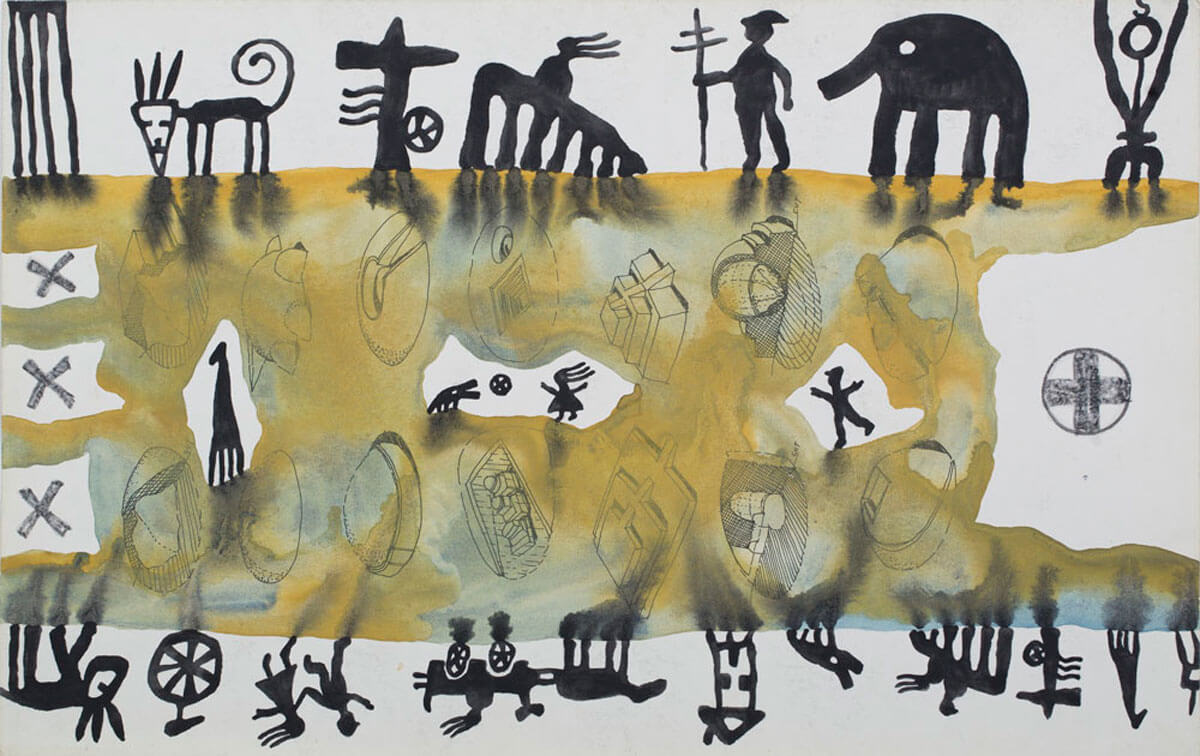
Urban Stories by Nadim Karam
LUX: What’s been your most challenging project to date?
NK: In different ways, many have been challenging; Prague because I had to negotiate through a tense post-communist social climate, Nara (Japan) because it took twenty years to get the Buddhist monks’ acceptance and Melbourne because I had to create ten kinetic three-story high sculptures on the other side of the world in just 9 months.
The scale of my work is getting bigger, though, and this is providing fresh challenges. For Dubai I want to create “The Cloud”, a public garden 300m above ground, and for Lagos I am working on an Elephant City, a dynamic urban system within a giant sculpture. Currently, I am working on projects for Shenzhen, Dilijan and Singapore. They might be far from realisation, but I never stop to think about whether I can do these projects or not. If I don’t stop working, at some point opportunity and encounters will create a window in time to make a project work.
LUX: Do you believe urban environments should be inclusive for everyone and, if so, how do you ensure this is possible in your art/architecture?
Nadim Karam: When you create an artwork, like a painting or a sculpture, and you hang it in a gallery or institution, the context is purposefully neutral and the focus is on the dialogue between the work and the viewer. In the urban environment, the placement of an artwork becomes politicised because the context has its history, memories, sights, sounds and moods. Public spaces are necessarily democratic arenas where opinions are challenged and it is not easy to reach consensus. So a public art project will not happen if people don’t believe in it. But if we can enrich our public spaces with stories, beauty, absurdity, fantasy or questions, we are enriching the community as a whole and enhancing the quality of their shared experiences.
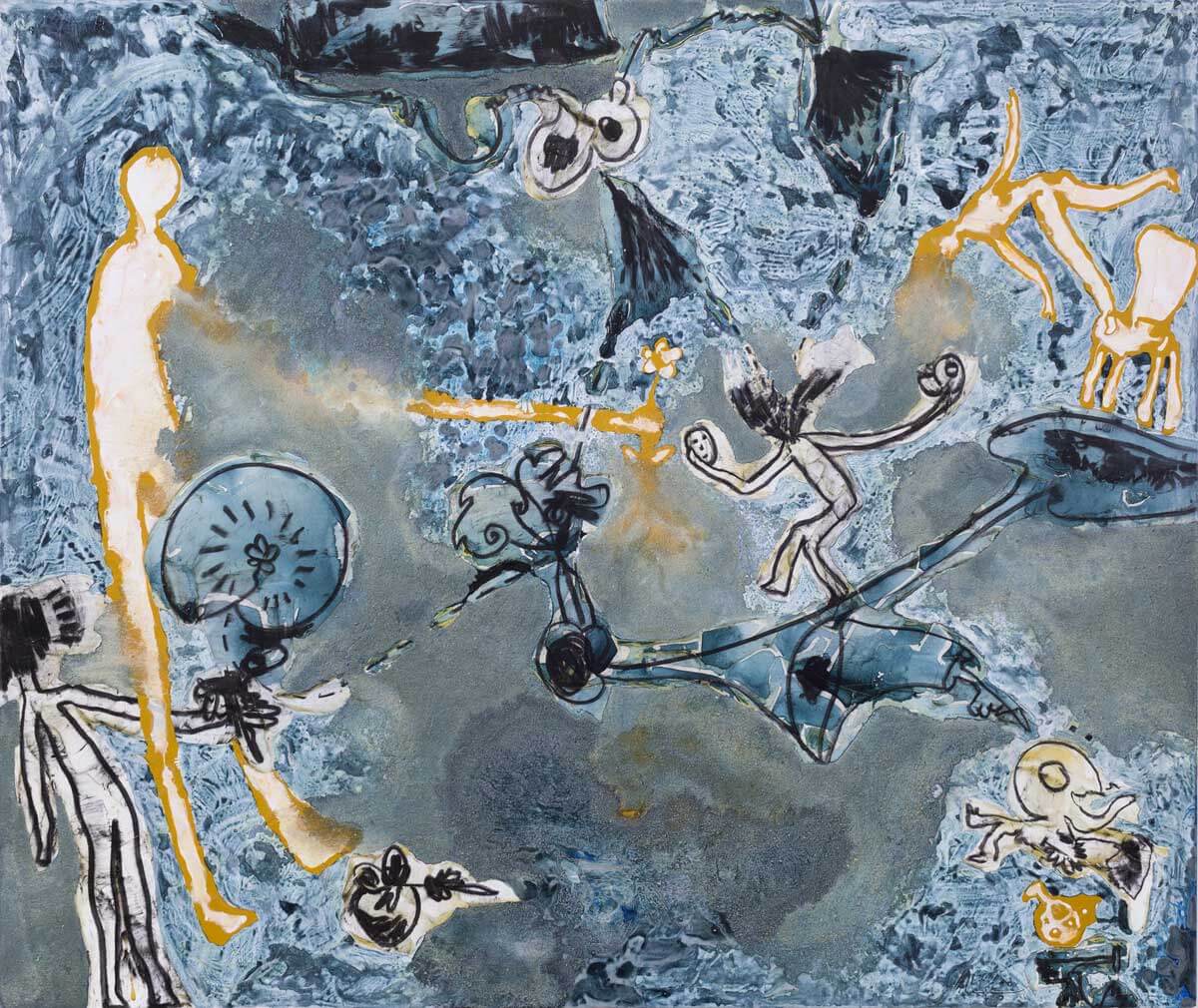
Dreams and Journeys 2017 by Nadim Karam
LUX: What’s your creative process like?
NK: All my projects grow from my sketchbooks, where I record my raw ideas. A series of these sketches will form a significant part of my new exhibition at The Fine Art Society. I use lapses of time while travelling from one place to another to generate ideas, and when I get back to my office, I work with ten to fifteen people to transform these ideas into workable projects or sculptures. Otherwise, they might become paintings when I reach my studio.
Read next: Modern interpretations of the body at Past Skin, MoMa PS1
LUX: What’s it like to be an artist in Lebanon?
NK: It is challenging, because there is no support from cultural institutions. At the same time, we live with uncertainty; at any time, bombs can explode and we have to close the office. You have to be sufficiently independent to be an artist in Lebanon, because you cannot live from it otherwise. My projects are all over the world, so I spend a lot of time travelling, but I generate all my work from Lebanon – it is a place of continuous energy and inspiration.
LUX: Where are your favourite urban environments in the world and why?
NK: I love the richness of all urban environments and their different cultures. They are a collision of so many factors; each city has a completely different aura and way of being despite all our globalisation efforts. The projects I have created all came from the serendipity of encountering a city and being inspired to interact with it. I celebrate the identity of each place by first trying to understand it, then offering it a bouquet of stories.
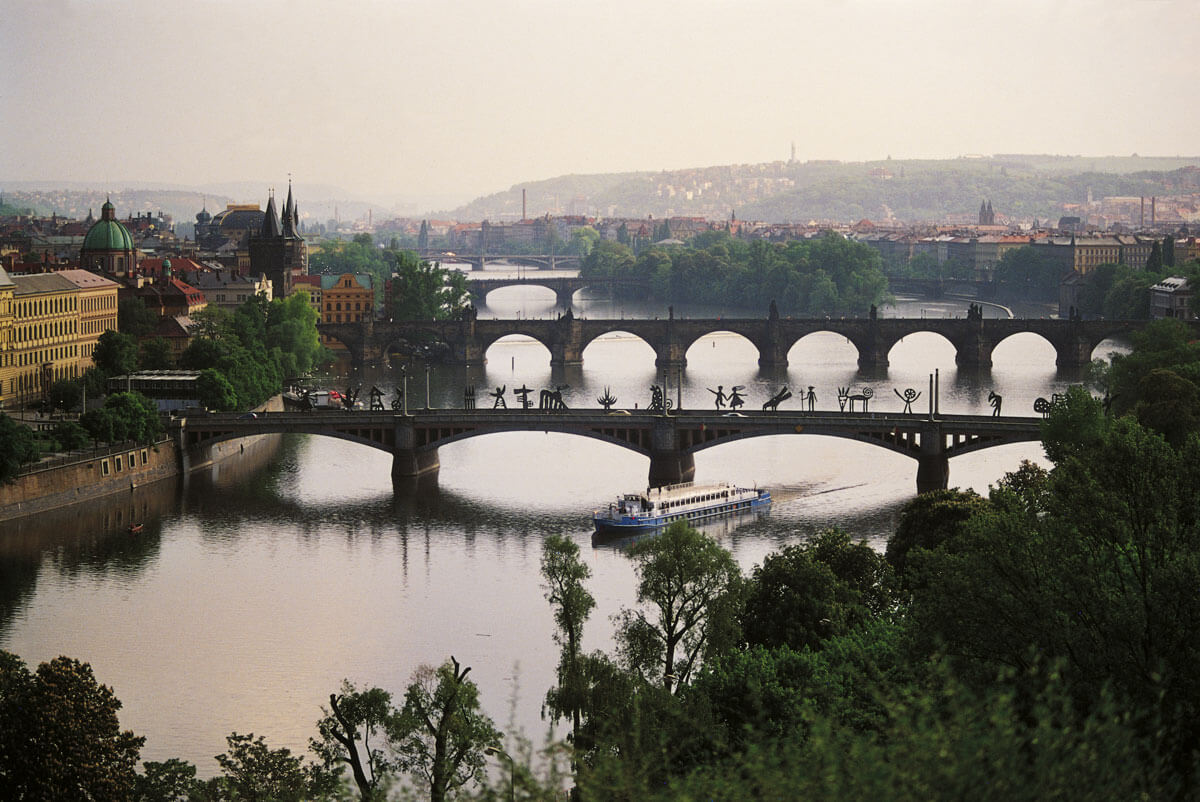
T-Race’s PCB 13 General View, Public Art, Prague 1997 by Nadim Karam
LUX: What’s next?
NK: Currently, I have an exhibition entitled ‘Urban Stories’ at The Fine Art Society in London, which showcases over twenty years of my practice. The exhibition came about through the shared motivation of The Fine Art Society and myself to draw a connecting line from my early sketches to my latest works. Meanwhile, I am designing and building my own art studio, “The Muse” in the Lebanese mountains, and the Pavilion of the Whole World.
‘Urban Stories’ runs until 19 May 2017 at The Fine Art Society, Mayfair, London


